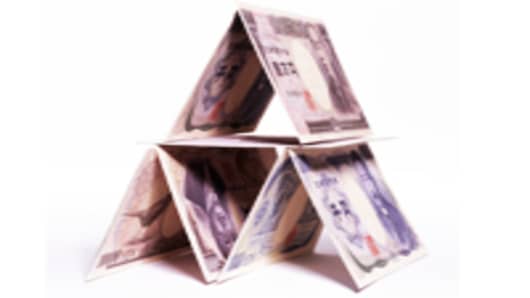"Once again, the minutes have sounded a slightly more hawkish tone and that's really what's benefiting dollar/yen," said Omer Esiner, chief market analyst at Commonwealth Foreign Exchange in Washington.
(Read More: End to Fed Bond Buying 'Premature': Lockhart)
The Fed's quantitative easing program is tantamount to printing money and dilutes the value of the dollar. The March minutes, however, may not reflect the current mindset of Fed officials in the aftermath of data last week showing tepid jobs growth last month. The Fed has said it would continue its bond-buying program until the labor market improves substantially. Weekly U.S. jobless claims data to be released on Thursday will provide another glimpse into the sector.
After breaking technical resistance at 99.73 yen—which was a 50 percent retracement of the dollar's drop from its June 2007 high of 124.14 yen to a record low of 75.311 yen set in October 2011—the dollar rose to a session high of 99.87 yen, its highest level since April 2009. The dollar last traded at 99.81 yen, up 0.8 percent on the day, according to Reuters data.
In the options market, demand for protection against the dollar's decline has dissipated, with three-month risk-reversals trading close to neutral. Demand had been biased for dollar puts, the right to sell dollars, throughout March, but last week's BoJ announcement has essentially served to erase the need for that protection.
The yen temporarily recouped losses after BoJ Governor Haruhiko Kuroda said the bank has taken all necessary steps for now in its easing program, but the bounce was short-lived. Kuroda also said the bank was resolved to keep printing money for as long as needed to achieve 2 percent inflation, signaling his readiness to offer further stimulus or maintain an ultra-easy policy beyond two years if meeting the target by then proves difficult.
(Read More: Japan's Unfinished Policy Revolution)
"He is saying 'for now' that tells me he will opt for further easing in the future," said Neil Jones, head of hedge fund FX sales at Mizuho Corporate Bank in London. Jones said the BOJ's attempt to reach 2 percent inflation would imply dollar/yen trading at 110.00.
Traders said hefty options barriers around 100 yen could slow the dollar's rise, but an eventual break above that level looked inevitable.
The euro last traded 0.7 percent higher at 130.43 yen, having risen as high as 130.50 yen on Reuters data, its strongest level since January 2010.
Against the dollar, the euro was at $1.3068, down 0.1 percent on the day, as investors opted to book profits after it hit a one-month peak of $1.3121.
In recent days, the euro has received some support from market speculation that Japanese investors looking for higher returns may opt for euro zone assets. Expectations of Japanese buying have pushed French, Dutch, Belgian and Austrian bond yields to record lows.
(Read More: What to Do in Market Where No News Is Bad News)
Chinese import data buoyed the Australian dollar, while stock markets around the world rallied, with the S&P 500 breaking its previous record intraday high, set on Oct. 11, 2007. The Dow hit another intraday milestone, also rising to a record high.


